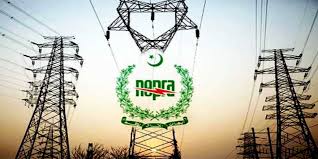
Aftab Maken
The National Electric Power Regulatory Authority (NEPRA) has directed the Power Division to address the concerns of the industrial sector regarding inconsistent power supply. Due to frequent disruptions in grid electricity, many industries are now seriously considering reverting to Captive Power Plants (CPPs), despite their higher operational costs.
These directions were issued during a public hearing on a petition filed by the Central Power Purchasing Agency-Guarantee (CPPA-G). The petition related to the assumptions used to project the Power Purchase Price (PPP) for the financial year 2025–26.
The hearing was chaired by NEPRA Chairman Waseem Mukhtar and attended by Member (Technical) Sindh Rafique Ahmad Shaikh, Member (Technical) KPK Maqsood Anwar Khan, and Member (Law) Amina Ahmed.
CPPA-G presented seven scenarios for the proposed PPP. In scenario one, PPP was projected at Rs 24.75 per unit; scenario 2 at Rs 26.04; scenario 3 at Rs 25.88; scenario 4 at Rs 26.33; scenario 5 at Rs 26.70; scenario 6 at Rs 26.55; and scenario 7 at Rs 26.22 per unit. CPPA-G representative Naveed Qaiser informed the hearing that scenarios 4 and 5 are the most likely to be implemented in the next fiscal year.
However, several interveners challenged these projections. They argued that the estimates fail to reflect the expected decline in hydropower generation and criticized the assumed exchange rate of Rs 290 per USD, which could heavily influence electricity pricing.
Arif Bilwani highlighted flawed assumptions around hydrology, pointing to current drought-like conditions. He urged NEPRA to make CPPA-G’s hydrology report public. He also questioned the assumed GDP growth rate of 2.8% used in the projections, noting that the World Bank had recently revised its estimate down to 2.7%.
“Demand growth doesn’t reflect industrial realities, especially with persistent contraction in large-scale manufacturing,” Bilwani said.
He further noted that the benefits from renegotiations with Independent Power Producers (IPPs) and Generation Companies (GENCOs) are not visible in capacity payment projections. He pointed out that the Commercial Operation Date (COD) of the Jamshoro coal power plant alone will add Rs 60 billion in capacity charges. “There’s also no indication of renegotiation progress with Chinese IPPs or the remaining local IPPs,” he added.
Bilwani also criticized inflation and KIBOR assumptions, pegged at 8.65% and 11.9% respectively, stating that both figures are higher than current trends and need revision. He said the impact of solar generation—whether net-metered or behind-the-meter—had also not been properly factored into the model.
In response, Qaiser said the projections for GDP growth, inflation, and interest rates were based on inputs from international financial institutions, the Finance Division, and other relevant departments.
Amir Sheikh from Lahore stressed that industry expects electricity tariffs to decrease—not increase—from July 2025, compared to the fourth quarter of FY 2024–25. “Power quality from the grid is already poor, causing up to 10% production losses compared to captive generation. The industry is seriously considering a return to CPPs. If tariffs also increase, it could significantly reduce electricity consumption,” he warned.
He also questioned the lack of visible benefits from recent renegotiations with IPPs, noting that proposed tariffs remain close to last year’s rates. “Various tariff deductions announced by NEPRA were time-bound till June. If the base tariff isn’t reduced by July 1, the end of QTA and FCA benefits could push rates up by Rs 5–6 per unit,” he added.
A representative from the Punjab Power Board questioned whether renegotiated IPP capacity payments had been factored into the assumptions, given that projections remained unchanged. In response, Qaiser said the government initially projected a Rs 4 trillion reduction in capacity payments, but this has been revised down to Rs 2–2.4 trillion due to additional liabilities from Jamshoro and Shahtaj Sugar Mills.
When asked by the Member from KPK, CPPA-G responded that industrial tariffs could decline by 1% to 8%, depending on the scenario.
Tanveer Barry, a representative from KCCI Karachi, said that the projected PPP range between Rs 24.75/kWh and Rs 26.22/kWh is still very high. He noted that such tariffs undermine industrial competitiveness, increase the cost of doing business, and may discourage export growth.
He pointed out that although the government claimed savings through renegotiated agreements, capacity charges remain high. “In Pakistan, the industrial sector pays nearly double the electricity prices compared to other regional countries,” he said. Barry recommended abolishing the Time of Use tariff structure for industrial consumers. “Expensive power plants should be shut down and replaced with efficient and renewable energy sources,” he added.
Rehan Jawed emphasized the need for the government to finalize its stance on net metering, warning that it could become a major issue for the power sector similar to the IPP issue.
Amir Riaz from APTMA criticized policymakers for making irrelevant decisions and proposed an integrated approach to reduce electricity rates for the industry.
During the hearing, it was revealed that the PPP could drop by 78 paisas to Rs 2.25 per unit, potentially saving consumers between Rs 140 billion and Rs 400 billion in the next fiscal year. The average PPP is expected to range between Rs 24.75 and Rs 26.22 per unit, compared to the current average of Rs 27 per unit.
Authorities projected a possible Rs 2 per unit reduction in tariffs along with a 2.8% to 5% increase in demand, assuming an exchange rate of Rs 300/USD for FY 2025–26.
The case officer explained that due to varying demand and fuel price assumptions, average per-unit prices in different scenarios could range between Rs 6.8 and Rs 8.1. Total fuel costs might reach Rs 1.28 trillion, influenced by fluctuations in the exchange rate, inflation, and interest rates.
Some scenarios also predict a 24% reduction in electricity prices compared to the current year. Transmission losses for NTDC are expected to remain stable at 2.80%.
NEPRA questioned the Ministry of Energy’s optimistic demand projections, especially given recent downward trends. In response, ministry officials said that demand is expected to rebound in line with projected GDP growth. They noted a 28% increase in electricity demand in April, attributing this to recent tariff reductions that encouraged industries to reconnect to the grid.
Projections from CPPA-G were challenged by multiple interveners, who argued that the estimated PPP for FY 2025–26 does not accurately account for a likely reduction in hydropower generation. The budget for FY 2025–26 is expected to be prepared using an exchange rate of Rs 290 per dollar.
Officials reiterated that the estimated PPP for the upcoming fiscal year is expected to fall between Rs 24.75 and Rs 26.22 per unit, compared to Rs 27 per unit in the current year. Authorities also estimate a potential Rs 2 per unit reduction in electricity prices, alongside a 2.8% to 5% increase in demand.
During the briefing, the case officer explained that electricity prices are expected to vary depending on demand and fuel costs. With higher fuel prices and lower demand, prices could rise. Fuel costs are projected at Rs 1,284.11 billion for FY 2025–26.
Compared to the current year, some scenarios forecast up to a 24% decrease in electricity prices. Transmission losses for NTDC are expected to remain at 2.80%.
During the hearing, NEPRA again questioned the Ministry of Energy’s claims regarding increasing electricity demand. Chairman Waseem Mukhtar asked how demand could rise when it has been declining in recent years. Ministry officials responded that they expect demand to grow with GDP, and reductions in electricity prices have already led to increased consumption. In April, demand increased by 28%, with industries reconnecting to the grid.
The Ministry of Energy also briefed NEPRA on fuel price projections for the next fiscal year. Officials stated that gas for electricity generation is expected to cost Rs 1,050 per MMBTU. Thar coal is projected to cost $20 per ton from July to September, and $18 to $19 per ton from October to June. Imported coal (API 4) is estimated to remain at $100 per ton, imported coal (ICI 3) at $74 per ton, and imported coal (ICI 5) at $35 per ton. Brent crude oil is expected to be priced at $74 per barrel until January 2026 and $72 per barrel from March to June 2026.
Furnace oil is expected to cost $522 per ton from July to December and $508 per ton from January to June. High-speed diesel is projected to remain at Rs 264 per liter throughout the year.
According to the Ministry, IMF projections indicate a GDP growth of 3.6% in 2026, with electricity demand projected to rise by 2.8% to 5% in FY 2025–26. Demand on the 132kV grid may reach between 128,000 million and 131,000 million units.
Officials said that electricity demand dropped significantly in 2023, improved somewhat in 2024, and is expected to grow steadily moving forward.
NEPRA Chairman Waseem Mukhtar instructed the Power Division to take the concerns of the industrial sector seriously, especially regarding poor service quality from distribution companies (Discos) and the need for clarity on future pricing, so that industries can plan ahead. Power Division official Bhatti acknowledged the issue of sudden power interruptions and committed to addressing them through the PPMC.
 BeNewz
BeNewz




